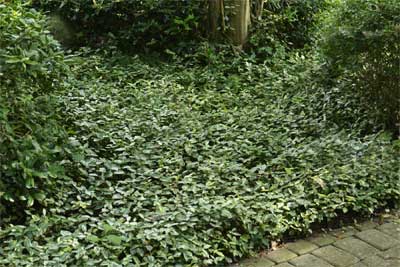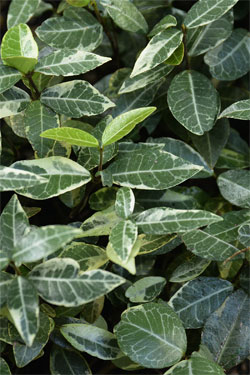From the Sperry Gardens – August, 2012


I’ve had a love affair with Asian jasmine since I was about 14 years old. Let it be known that I’m referring to a plant — not a person, and that’s why I was careful to keep "jasmine" in a lower-case form.
I’ve always been a plant geek. Even in junior high, I was collecting and growing plants in our backyard east of the Texas A&M campus. By high school, I was doing full-fledged landscape contracting in Bryan/ College Station after school most days and all day on Saturdays.
We did most of our shopping in Houston, because College Station was still very small, and that’s where I first saw regular Asian jasmine being used as a groundcover. Texas A&M’s grounds people were bringing it to the university, and suddenly it seemed that groundcovers were the newest trend in fine landscape design everywhere I turned.
Not to be left behind, I rototilled up big beds around our house, and I set out my transplants from Cornelius Nursery in Houston. They grew and they spread, and I was loving my gardening life. I was landscaping like the pros.
I left for Ohio to finish my B.S and M.S. degrees at The Ohio State University, and when I came back to Texas to serve as Dallas County Extension Horticulturist in 1970, Asian jasmine groundcover beds were everywhere (still are). Ralph Pinkus at North Haven Gardens introduced Nortex jasmine, also now known as "longleaf" jasmine, in the early 1970s, and I grew and loved it as well.
About the time we moved to our rural home in 1978, I found a one-gallon pot of variegated Asian jasmine at Germany’s Nursery in Fort Worth, and I planted it in a strategic little place along our new driveway. It’s grown and spread over those years. I’ve kept it trimmed back somewhat, but it now covers probably 200 square feet, and it brightens its dark little corner of our landscaping entry.
I’m not always a big fan of variegated foliage, especially in areas like DFW, where alkaline soils leave too many plants yellowed for lack of iron. But, white variegation is crisp and cheerful, and in moderation, it’s a grand addition to a small spot in your landscape.
In all my years growing Asian jasmine in its various forms, I have never seen the first insect or disease cause it any harm. Its only foe: Texas wintertime temperatures, particularly in the northern half of the state. It sometimes browns to the ground, but it has always come back faithfully. Otherwise, it does very well in hot weather, and it’s respectful of our limited water reserves. Oh, you can’t let it wilt badly or you’ll lose it, but it’s not the water hog that some of our other common groundcovers can be.
So, while I’ve been married for 45 years and 3 weeks to a grand gal of German Ohio descent, my fondness for this sweet Japanese beauty goes back even farther. If you, too, want to try variegated Asian jasmine, start your hunt now. It may take you awhile, but the search is half the fun.
Additionally: Want an absolutely unbelievably fragrant spring-flowering vine? Plant Confederate star jasmine, the larger-leafed, twining sister of Asian jasmine. Its white pinwheel flowers perfume an entire neighborhood. You’ll have to protect it, however, from temperatures down into the teens. It’s great in South Texas, and it’s suited to protected locations in North Texas. (I’m in rural Collin County, and I grow mine in a large patio pot on a trellis. It goes into the greenhouse each winter.)

